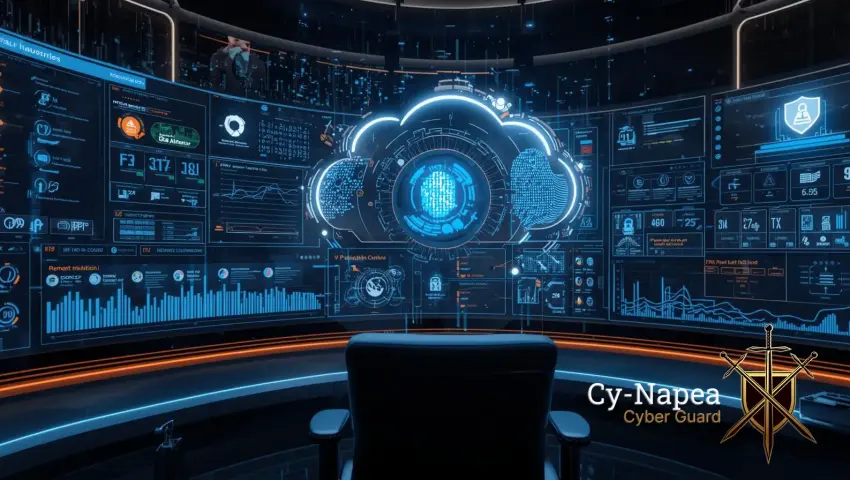
Remote Monitoring and Management (RMM)
Cy-Napea® Cyber Cloud includes a fully integrated Remote Monitoring and Management (RMM) module designed to help service providers deliver superior IT administration, proactive monitoring, and automated maintenance across client environments. Built with a security-first architecture and powered by AI, the RMM system enables real-time visibility, intelligent automation, and seamless integration with cybersecurity and backup services—all from a single console.
Architecture and Integration
- Unified Platform Design
RMM is natively integrated into the Cy-Napea® Cyber Cloud console and uses the same agent as other modules. This eliminates the need for separate deployments and ensures consistent data flow across backup, security, and management layers. - Security-First Approach
All RMM operations are aligned with secure code development practices and major compliance standards such as NIST. The system includes built-in self-defense mechanisms to prevent tampering and unauthorized access. - Native Integration with Cybersecurity Modules
RMM is tightly coupled with Cy-Napea® XDR, vulnerability assessment, patch management, and anti-malware monitoring. This enables full-cycle protection and coordinated response.
Monitoring and Administration
- Device Discovery and Asset Management
Uses Device Sense™ technology to automatically detect and inventory hardware and software assets. Includes geolocation tracking and real-time status updates. - System and Hardware Monitoring
Tracks CPU, memory, disk health, network activity, and system uptime. Supports configurable alerts and thresholds for proactive issue detection. - Anomaly-Based Monitoring
Uses machine learning to detect abnormal behavior and performance degradation. Reduces alert fatigue and improves incident accuracy. - Microsoft 365 Management
Monitors security posture, user activity, and configuration status across Microsoft 365 tenants. Supports user provisioning and policy enforcement.
Automation and Response
- AI-Assisted Scripting
Enables technicians to automate routine tasks using intelligent script recommendations. Supports custom scripts for remediation, configuration, and maintenance. - DeployPilot™ Software Deployment
Uses AI to optimize software rollout across endpoints. Reduces deployment errors and ensures compatibility with target systems. - Auto-Response Actions
Executes predefined actions in response to detected issues. Includes service restarts, patch application, alert suppression, and endpoint isolation. - Patch Management with Fail-Safe Logic
Applies security and feature updates using AI-based patch stability scoring. Automatically rolls back failed patches to maintain system integrity.
Remote Support and Access
- Built-In Remote Desktop and Assistance
Provides secure, high-performance remote access to endpoints. Supports Windows, macOS, and Linux workloads. - Session Management and Chat
Allows technicians to initiate remote sessions, communicate with users, and perform diagnostics in real time. - Quick Remote Actions
Enables rapid execution of common tasks such as reboot, service restart, and file transfer without full remote control.
Security and Compliance
- Vulnerability Assessment
Scans endpoints for known vulnerabilities in operating systems and third-party applications. Prioritizes remediation based on severity and exposure. - Anti-Malware and Firewall Monitoring
Tracks the status of endpoint protection tools and firewall configurations. Flags outdated or disabled components. - Self-Defense Architecture
Prevents unauthorized modification or termination of RMM agents and scripts. Ensures continuous protection and operational integrity.
Strategic Benefits
- Enables proactive IT management and rapid issue resolution
- Reduces technician workload through intelligent automation
- Enhances endpoint security posture with integrated monitoring
- Improves client satisfaction with faster response and transparent reporting
- Scales effortlessly across diverse environments with minimal overhead



